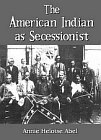|
Lost History
Native American
|
Bestsellers
Native American
Products
- per page
The region described in the following pages comprises the valley of the Rio Verde, in Arizona, from Verde, in eastern central Yavapai county, to the confluence with Salt river, in Maricopa county.
This book is not meant as a literary work, for I am not and do not pretend to be a literary man. It is but a record-an amplified log-book, as it were-of what befell me during my solitary peregrinations in Hokkaido, and a collection of notes and observations which I hope will prove interesting to anthropologists and ethnologists as well as to the general public.
The following pages are the result of an earnest desire to settle the question of, and, if possible, to fix the belief in, the voyages of Prince Madoc and his followers in 1170 A.D., and to assign them their rightful place in American history.
Discover the mysteriousness of the America's ancient ruins, proving superior civilizations once inhabited these two continents. Even after 500 years, little is known about these cultures.
Most of us want to do what we are not doing. In the majority of human hearts, deep down, is an intangible tormenting wish to go somewhere, to see some land, to do something which is not in the programme drawn up for us by the inexorable fate of birth and circumstance. Usually the longing is crushed out by the juggernaut wheels of life's ponderous Car of Necessity, which drives us all forward towards the Unknown in a set groove from which the most desperate efforts never extricate us.
This little volume is a contribution to the comparative study of religions. It is an endeavor to present in a critically correct light some of the fundamental conceptions which are found in the native beliefs of the tribes of America.
This book has been purposely given a sub-title, in order that the peculiar position of the Indian, in 1861, may be brought out in strong relief. He was enough inside the American Union to have something to say about secession and enough outside of it to be approached diplomatically. It is well to note, indeed, that Albert Pike negotiated the several Indian treaties that bound the Indian nations in an alliance with the seceded states, under the authority of the Confederate State Department
American Indians and The Gods From Outer Space - Many now believe the ancient legends of the American Indians tell of visitations to our planet thousands of years ago by space travelers...and there is evidence that today's tribes are still in contact with beings from far away realms and other dimensions.
Very little, it is conceived, is necessary to enable the reader to determine the writer's position on the extreme south western frontiers, in the year 1818. He had spent the summer of that year in traversing the mine district, which extends along the right bank of the Mississippi, between the mouth of the Maromeg and the diluvial cliffs south of Cape Girardeau, extending west and south westward to the sources of the St. Francis.
The intelligent thought of the world is ever advancing to a fuller appreciation of the worth of the past to the present and the future. Never before have associations, societies and journals devoted to historical studies been so numerous. All times and tribes are searched for memorials; the remote corners of modern, medieval and ancient periods are brought under scrutiny; and going beyond these again, the semi-historic eras of tradition and the nebulous gleams from pre-historic milleniums are diligently scanned, that their uncertain story may be prefaced to that registered in "the syllables of recorded time."
THE purpose of this volume is to give a summary of what is known of American Antiquities, with some thoughts and suggestions relative to their significance. It aims at nothing more.
In the beginning of the Conquest of America, the attention of Europe was chiefly directed toward the gigantic constructions of Couzco, the high roads carried along the centre of the Cordilleras, the pyramids with steps, and the worship and symbolical writings of the Mexicans.
I have collected, in the following work, whatever relates to the origin and first progress of the arts among the natives of America. (1814)
The passionate love with which the Nahuas cultivated song, music and the dance is a subject of frequent comment by the historians of Mexico. These arts are invariably mentioned as prominent features of the aboriginal civilization; no public ceremony was complete without them; they were indispensable in the religious services held in the temples; through their assistance the sacred and historical traditions were preserved; and the entertainments of individuals received their chief lustre and charm from their association with these arts.
Ever heard of the round towers of Peru? Stone Circles? or Henges?
- per page



























